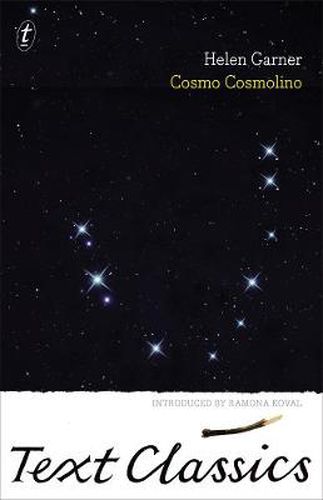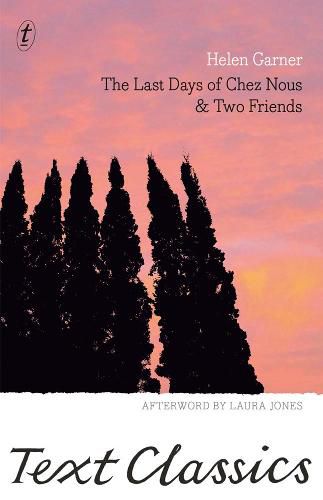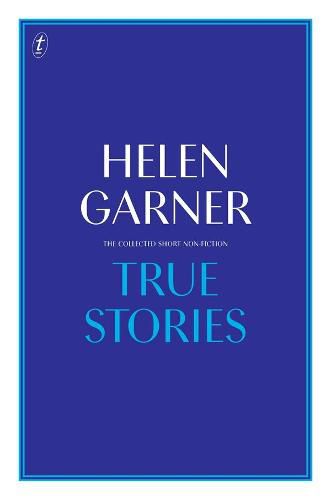Cosmo Cosmolino
Helen Garner

Cosmo Cosmolino
Helen Garner
He straightened his spine, raised his head, and extended his gun arm towards me in a slow, vertical arc. I saw then what he was, and stood still in front of him, for he was here on business. He was a small, serious, stone-eyed angel of mercy.
Janet is a skeptic, a journalist; Maxine revels in New Age fantasies; and Ray, a drifter, is a born-again Christian. The common ground is the house they share. But their fragile domestic balance is about to explode amid the smashing of ukeleles, the unexpected ascension of an angel, and a sudden shower of jonquils.
Review
Jo Case
Cosmo Cosmolino (1992) was Helen Garner’s last work of fiction before she pioneered her own distinctive brand of questing, addictive narrative non-fiction with The First Stone.
It’s an unusual book; not quite a novel, not quite a short-story collection; both completely what you expect from a Helen Garner book (share houses, trams, ageing hippies, finely honed ‘kitchen table candour’, as Robert Dessaix put it when reviewing The Spare Room) and a surprising departure (faith, belief, angels, religion). The prose, too, is a mix of classic Garner – deceptively simple observations, dialogue so slyly provocative it makes you gasp – and a more ornate, poetic style: long sentences, images bunched together like bouquets rather than presented as polished, solitary gems in her usual fashion.
Cosmo Cosmolino consists of two short stories and one novella. The unnamed narrator of the first story, ‘Recording Angel’, is, the reader gradually realises, the same person as Janet, the recently divorced journalist and writer of the novella, ‘Cosmo Cosmolino’. And Raymond, the self-absorbed, socially illiterate protagonist of the second story, ‘A Vigil’ (whose boorish negligence contributes to the death of his depressed, substance-abusing girlfriend) is one of Janet’s two lodgers in ‘Cosmo Cosmolino’, now a chastened born-again Christian.
The three stories are united by themes as well as characters: dark maybe-angels appear in the first two and in the third, Raymond is greeted as an angel by mad artist Maxine, Janet’s other lodger. Questions of faith and belief – how it can sustain, resurrect or transform – how misplaced faith can lead a person astray and lack of faith can leave a person barren – are central to all three stories.
Love and family are central too, despite (or maybe because of) the near-total absence of traditional family arrangements. Garner seems to be questioning the sustainability and the fall-out of the share house culture of her (and Janet’s) past; self-made families that drift apart, leaving lonely individuals in their wake.
Janet’s seriously ill friend Patrick in ‘Recording Angel’, who ‘recited [her] life like a poem he had learnt by heart’, has a wife and children who love him with a fierce straightforwardness missing from the other relationships in the book. He teases Janet for her nomadism, and what she later calls her ‘unwifeliness’ (she has ‘no talent for intimacy’). Although Janet privately recognises Patrick’s barbs as his need to contrast her life with his own, and she calls her domestic landscape a ‘blasted heath’ with her tongue firmly in cheek, what we later encounter in Cosmo Cosmolino is exactly that.
Both Janet and the wildly eccentric Maxine are childless; both feel it as an acute absence. When Janet recalls the share house ‘kids’, now scattered and presumably grown, it is bittersweet. Hearing passing schoolchildren, she muses, ‘It was a good sound, she believed with the part of her still believed anything; but it hurt her.’ The empty rooms in the house she owns, once a share house and now the aftermath of a recently failed marriage, are still named for those long-ago housemates who once occupied them. When Maxine and Raymond move into those unoccupied spaces, they are also creating a community of sorts again, though a diminished and ill-matched one.
There is a sense of hope about Cosmo Cosmolino, a sense of faith in community and the families we make, if a nagging sense that the permanence and transience of such families makes them no substitute for the bonds of blood or traditional unions. And there is the idea that loving and believing – even if such enterprises may be doomed to dissolve – is worth the plunge, and far preferable to the alternative of careful, closed-off cynicism.
This is a fascinating book, with flashes of brilliance and scenes of piercing truth. Helen Garner is never boring; she is always an artist. And this gorgeous Text Classics edition is well worth buying not just for its striking cover, but for Ramona Koval’s illuminating introduction, which includes insights from Garner herself and a reflection on Cosmo Cosmolino’s place within her body of work.
Jo Case is senior writer/editor at the .
This item is in-stock at 2 shops and will ship in 3-4 days
Our stock data is updated periodically, and availability may change throughout the day for in-demand items. Please call the relevant shop for the most current stock information. Prices are subject to change without notice.
Sign in or become a Readings Member to add this title to a wishlist.


















